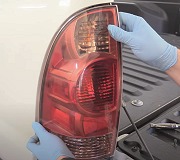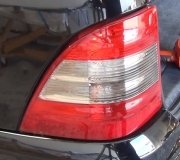The fuel pump may fail to run during engine cranking, but it will run for one second every time you turn on the ignition switch. That pressure will make it look like the pump is running all the time. If the injectors are not firing, that pressure will not bleed off so it will look like the pump is working when it is not.
You can check for twelve volts to the ignition coil or coil pack but no test light or voltmeter is going to be able to show what is happening on the switched ground side. There will not be any voltage or pulses to the ground side if there is not voltage to the feed side.
The first thing to do is measure the voltage to the ignition coil, any injector, or either small wire on the back of the alternator. On older models that was the dark green/orange wire. If yours is different, just look for the wire that is the same color to the injectors and coil. You should see twelve volts there for one second after turning on the ignition switch. You should be able to hear the fuel pump run at the same time. That voltage must return during engine rotation, (cranking or running). If you never see voltage there, you will need to determine if there is twelve volts getting to the automatic shutdown (ASD) relay and whether the engine computer is turning it on.
If there is twelve volts during that one second, the computer has control over the ASD relay and the circuit is working. If it does not turn on again during cranking, it is not receiving pulses from the cam or crank sensor or they are out of sync. Those sensors share common 5.0 volt feed and ground wires. A corroded splice, a shorted sensor, or a grounded wire can stop the signal from one or both sensors. A scanner that displays live data will list both sensors as "no" or "present" to show whether their signals are being received at the computer.
A failed camshaft position sensor is the most common problem. The next would be a jumped timing belt. If it had jumped one tooth, the check engine light should have turned on and a diagnostic fault code, "cam and crank sync" would be set in memory. At two teeth off, the engine computer will shut the engine down to protect the valves. It does that by turning off the ASD relay. That removes power to the ignition coil(s), injectors, alternator field, oxygen sensor heaters, and fuel pump or pump relay. At three teeth off, or if the belt breaks, open valves will be hit and bent by the pistons as they coast to a stop. The clue will be found by checking those fault codes.
Thursday, January 5th, 2012 AT 9:22 PM



